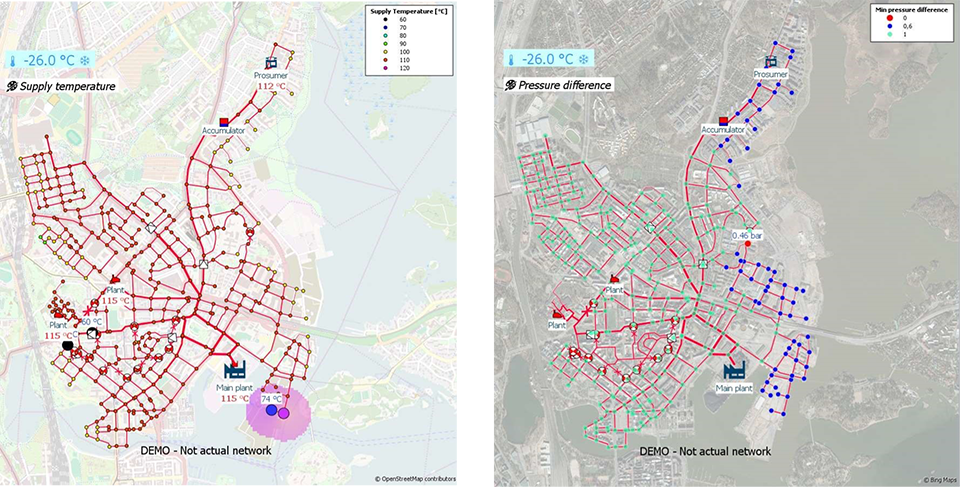Kasperi Lehtinen, responsible for network design and information systems for the past four years at Lahti Energia, develops intelligent approaches for managing their district energy networks through network simulations.
Lahti Energia, an energy utility in Southern Finland, decided to look for a new district heating simulation software after their old system did not meet their needs anymore and became obsolete. They did not have the resources to do much else but model the most significant pipelines and search for suitable pipe sizes – a typical situation in many utilities. When Lahti Energia started using Fluidit Heat, they had already adopted a Network Information System (NIS) but were still using their old Grades model made by consultants. Lahti Energia decided to entirely rebuild the network model in Heat as the previous network data was severely outdated, and the new model was going to be much more extensive.
“For Lahti Energia, the main idea was to get software that enabled us to intuitively examine our network on our own, decreasing the reliance on external consultants. As we have the best information on the state of our network in-house, we can improve the quality of the model, and conversely, decrease the number of small errors.”
– Kasperi Lehtinen
“While updating the network model, we found many inaccuracies and errors in the model, which we can then fix to improve the simulation. For example, some pipe sizes were incorrect, causing simulations to be inaccurate.” Says Kasperi. Once he joined, he brought modeling to a whole new level. Lahti Energia uses modeling as a tool for network planning, development, and balancing and continuously searches for optimization opportunities. Kasperi aims to develop a model that can help optimize Lahti Energia’s operations at many levels.
“One fascinating finding was that through Fluidit Heat simulations, we managed to reveal unnecessary circulations in wells where valves have been left open. Fixing this improved the pressure in the network.” Kasperi emphasizes that energy utilities usually get the most out of modeling to develop and use network models themselves. They have immediate access to all data from the system and have a great overall understanding of their energy system.
Kasperi enjoys the broad yet practical functionalities of Fluidit Heat. Especially data management and visualizations have greatly improved, which makes understanding the complex system much more accessible. If you have the time and skills, you can also enhance your models with Java and Python to streamline mass-editing data and create automatic reporting and analysis tools.

“I usually get many new ideas while doing the modeling work – the possibilities with Fluidit Heat are endless.”
– Kasperi Lehtinen
“I like how easily I can visualize the network data, GIS background layers, and simulation results. I can create professional customized graphical illustrations using Heat’s built-in tools. And better yet, I can do this with multiple scenarios to develop robust comparisons and quickly identify undersized pipelines.” He says and continues, “I have started to look at “What-if” scenarios to simulate how prepared we are for disasters. I like how all parameters and visualizations automatically update when I jump between scenarios. While the software is straightforward to use, there are also many more advanced options to explore and get new ideas from. “ Kasperi continues.
Lahti Energia has had a great start with Fluidit Heat and has already started to reap the benefits of modern modeling tools. There are many possibilities for applying modeling, and usually, you get more ideas along the way.
“In the future, we would like to do more scenario analysis to get insights into how different weather conditions affect our network. I usually get many new ideas while doing the modeling work – the possibilities with Fluidit Heat are endless. “ Kasperi says.